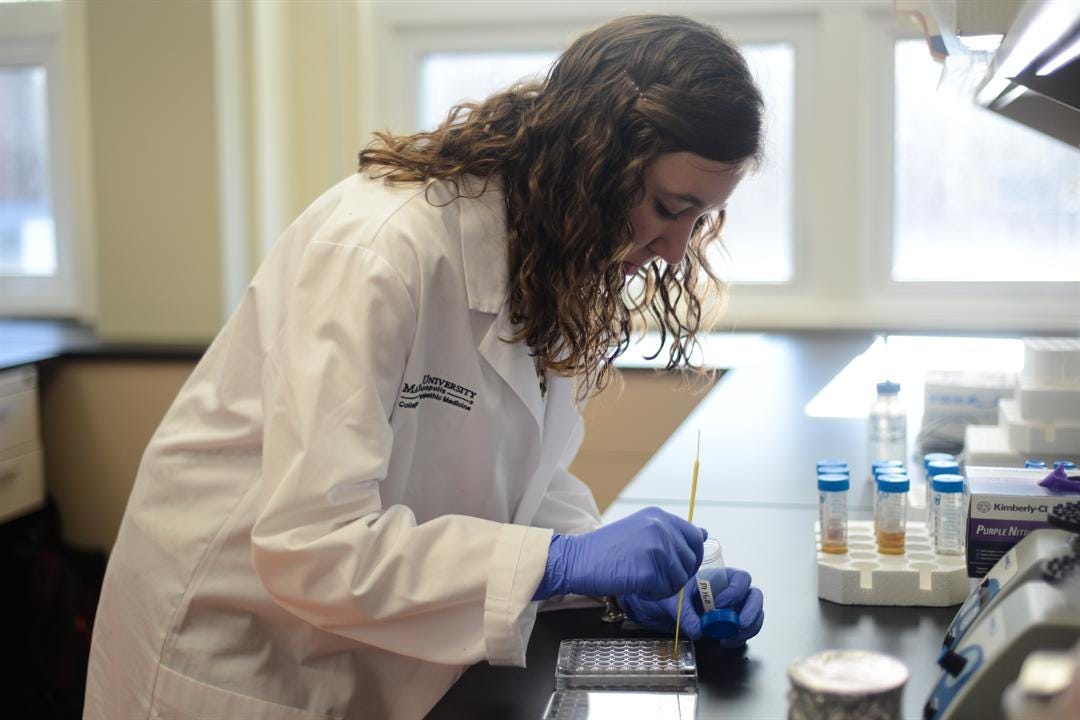First NIH Grant Boosts Marian’s Medical School
 The school believes examining the skin disorder through an osteopathic lens will provide a unique perspective.
The school believes examining the skin disorder through an osteopathic lens will provide a unique perspective.
Subscriber Benefit
As a subscriber you can listen to articles at work, in the car, or while you work out. Subscribe NowA young medical school in Indiana is celebrating a National Institutes of Health (NIH) grant that will not only address a common skin condition, but also establish the university’s footing in nationally-recognized research. The two-year, $300,000 award for Marian University is the school’s first grant from the NIH—a significant milestone and notable accomplishment for the university’s medical school, which opened just five years ago.
“Being an institution that has graduated only two classes of DOs (Doctors of Osteopathy), it is a big deal to be pushing forth new knowledge and scholarship,” says Marian University College of Osteopathic Medicine (MU-COM) Physiology Professor Dr. Thad Wilson. “I think this is showing the first step in our overall process of establishing ourselves here in Indiana and across the country.”
The grant is funding research focused on rosacea, a common skin condition that Wilson says affects about 16 million people in the U.S. The facial blood flow disorder causes flushing and redness, often triggered by things like exercise, being outside on a hot or brisk day and eating spicy food or drinking a hot beverage.
While scientists have studied the disorder for many years, they have yet to uncover the cause of rosacea. Marian is hopeful the grant will help MU-COM researchers shed light on the root cause of the disorder, so doctors can provide better treatment; currently, only the symptoms can be addressed, since rosacea’s cause remains unknown.
Wilson and co-investigator Dr. Kristen Metzler-Wilson, Marian associate professor of neuroscience and pharmacology, already have expertise in rosacea. Their earlier research revealed a connection between rosacea and the sympathetic nervous system, which activates what’s commonly known as “the fight or flight response” to a stressful event.
“This project is to examine what are some of the initial reasons why a person has this flushing response, and our proposal is to look at the sympathetic nervous system,” says Wilson. “In response to a stressful event, you would have a fight or flight response. We have some data that shows people with rosacea have higher responses of the sympathetic nervous system to a certain trigger than [someone who doesn’t have rosacea]. We’re going to tease out a number of the associations involved with having a hyperactive fight or flight response.”
Using human study participants, the study will measure the neurovascular activity of facial skin in response to triggers that typically cause flushing.
“Although rosacea sounds like it’s a very benign disorder because it involves mainly what people think of as facial flushing,” says Wilson, “it really does impact their quality of life.”
Wilson believes examining the skin disorder through the school’s osteopathic lens will provide a unique perspective. Osteopathic medicine is a holistic approach that emphasizes the interrelation of all systems in the body, each working with the other to heal itself. MU-COM is the only school of osteopathic medicine in Indiana.
“We look a lot at whole body systems and how the nervous system interacts with other systems in the body,” says Wilson. “I think that overall approach is well-matched with this kind of study, in which we’re looking at whole people, their nervous system responses and trying to address the disorder in a whole-body or systematic way.”
Wilson notes rosacea research is just one of several scientific projects underway at Marian, including work focused on bone-related health and microbial disease. The rosacea grant will also involve collaboration with undergrad students in various disciplines and interaction with the school’s new master’s program in biomedical science and doctor of nursing practice.
“When you can start to benefit an individual,” says Wilson, “and realize your particular research could, eventually, find some way for them to get better treatments, that’s what’s most exciting.”
Wilson says there’s a connection between rosacea and neuroscience, which is a flourishing area of study.
Wilson says using human subjects for the rosacea research makes the study unique.
